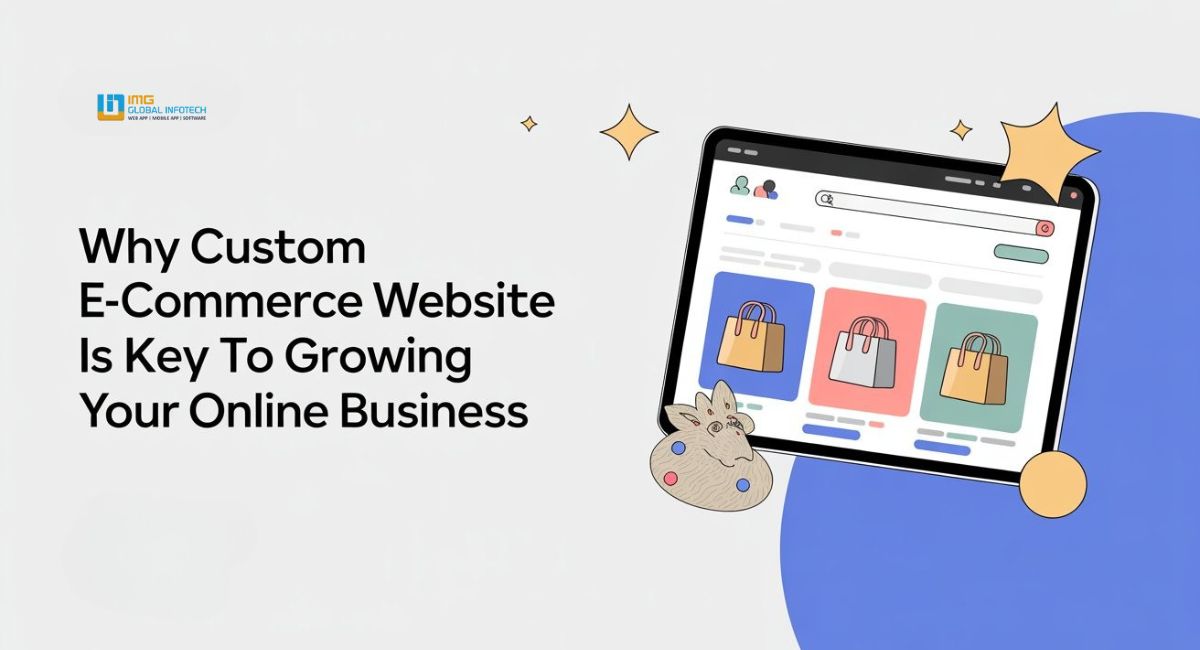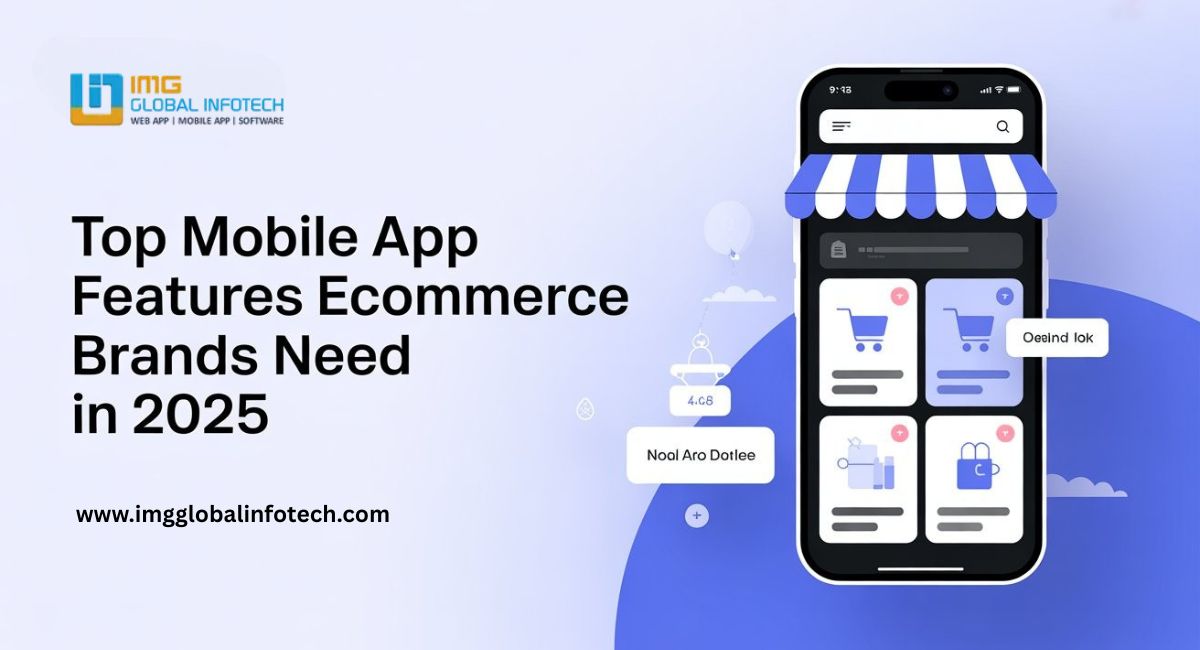ECommerce Website Design: The Ultimate Guide & Checklist

Strong 8k brings an ultra-HD IPTV experience to your living room and your pocket.
In today’s digital-first world, your eCommerce website is often the first interaction potential customers have with your brand. A well-designed online store can make the difference between thriving sales and missed opportunities. This ultimate guide dives into everything you need to know about eCommerce website design, from understanding your audience to launching a seamless, high-converting store. We’ll also provide a handy checklist to help you implement the best practices and boost your online success.
1. Introduction
A great eCommerce website development design is more than just aesthetics—it directly impacts user experience and sales conversions. Visitors expect intuitive navigation, fast load times, and a trustworthy environment to shop. When your site meets these expectations, customers stay longer, browse more, and ultimately buy more. This guide covers the essential design elements, technical considerations, marketing integrations, and maintenance tips needed to create a compelling eCommerce presence.
2. Understanding Your Target Audience
The foundation of any successful eCommerce site is a deep understanding of your target audience.
- Identifying Buyer Personas: Define who your ideal customers are by demographics, preferences, behaviors, and pain points. For instance, are you targeting tech-savvy millennials or budget-conscious families?
- Analyzing Customer Behavior: Use data analytics and customer feedback to understand shopping habits and product interests.
- Designing for Needs: Tailor your website’s design, content, and navigation to match the expectations and behaviors of your audience. For example, a younger audience may prefer dynamic visuals and social proof, while professionals might appreciate straightforward, minimalistic design.
3. Choosing the Right Platform and Technology
Selecting the appropriate eCommerce platform is critical for scalability and functionality.
- Popular Platforms: Shopify offers simplicity and integrated features; WooCommerce website development is flexible for WordPress users; Magento suits large-scale businesses needing customization.
- Factors to Consider: Evaluate ease of use, customization options, payment gateway support, SEO capabilities, and community support.
- Scalability and Flexibility: Ensure the platform can grow with your business, handle increasing traffic, and support future integrations like AI chatbots or AR product views.
When planning your site, consider consulting an experienced Ecommerce Web Development Company in Jaipur to ensure that your eCommerce website development is tailored perfectly to your business goals and local market dynamics.
4. Essential Design Principles for ECommerce Websites
To keep users engaged and convert visits into sales, follow these design principles:
- Clean and Intuitive Layout: Avoid clutter and ensure key elements like search bars, product categories, and CTAs (Call to Actions) are easily accessible.
- Mobile Responsiveness: Over half of online shopping is on mobile devices, so your site must look and perform flawlessly on all screen sizes.
- Fast Loading Speed: Slow sites lead to high bounce rates. Compress images, use caching, and optimize scripts to improve speed.
- Easy Navigation and Search: Implement clear menus and robust search functionality with filters to help users find products quickly.
- Consistent Branding: Use a harmonious color scheme, typography, and tone that reflect your brand identity and build trust.
5. Key Elements of an Effective ECommerce Homepage
Your homepage sets the tone for the entire shopping experience.
- Clear Value Proposition: Immediately communicate what makes your store unique and why visitors should buy from you.
- Eye-catching Banners and Visuals: Use professional images and banners that highlight promotions, new arrivals, or popular products.
- Featured Products and Promotions: Showcase bestsellers, limited-time offers, or seasonal items to grab attention.
- User-friendly CTAs: Use prominent buttons like “Shop Now” or “Explore Deals” to guide visitors toward the next step.
6. Product Pages that Convert
Product pages are where decisions are made—make every element count.
- High-Quality Images and Videos: Use multiple angles and zoom features; videos demonstrating product use add credibility.
- Detailed Descriptions: Clearly explain features, benefits, and specifications. Use bullet points for easy scanning.
- Pricing, Discounts, and Stock Info: Show transparent pricing, highlight discounts, and indicate stock availability to create urgency.
- Customer Reviews and Ratings: Social proof influences buying decisions, so display genuine feedback prominently.
- Related Products and Upselling: Suggest complementary items or upgrades to increase average order value.
7. Simplifying the Checkout Process
Cart abandonment is a major challenge; a streamlined checkout can prevent it.
- Multiple Payment Options: Support credit cards, digital wallets, UPI, COD, and other popular payment methods.
- Guest Checkout vs. Account Creation: Offer a guest checkout option for faster purchases while encouraging account creation for repeat customers.
- Secure Payment Gateways: Use SSL certificates and trusted payment providers to build trust and ensure data protection.
- Clear Progress Indicators: Let users know how many steps remain in the checkout to reduce uncertainty.
- Minimal Form Fields: Only ask for essential information to avoid frustrating the buyer.
8. Optimizing for SEO and Performance
Your website must not only look good but also be discoverable and efficient.
- On-page SEO: Optimize product titles, descriptions, URLs, and meta tags with relevant keywords.
- Site Speed: Use content delivery networks (CDNs), compress files, and leverage browser caching.
- Mobile SEO: Ensure mobile usability and fast loading on mobile networks to rank well in search results.
- Analytics: Track visitor behavior, bounce rates, and conversions to identify areas for improvement.
9. Integrating Marketing and Customer Engagement Features
Keeping customers engaged can increase loyalty and lifetime value.
- Email Subscriptions and Newsletters: Collect emails to share promotions, new products, and updates.
- Social Media Integration: Add social sharing buttons and link your profiles to increase reach and credibility.
- Live Chat and Support: Real-time assistance can answer questions and reduce purchase hesitation.
- Loyalty Programs and Discount Codes: Reward repeat customers and encourage upselling through incentives.
10. Testing, Launching, and Maintaining Your ECommerce Website
Before and after launch, continuous attention ensures ongoing success.
- Usability Testing: Conduct user testing to find and fix pain points in navigation or checkout.
- Performance Monitoring: Use tools to track uptime, speed, and error reports.
- Regular Updates and Security: Keep plugins, themes, and security certificates current to avoid vulnerabilities.
- Scaling and Improvement: As traffic and sales grow, upgrade hosting and optimize infrastructure.
11. The Ultimate ECommerce Website Design Checklist
- Define buyer personas and analyze customer behavior.
- Choose a scalable, flexible eCommerce platform.
- Design a clean, mobile-responsive, and fast-loading site.
- Craft an engaging homepage with clear CTAs.
- Create detailed, media-rich product pages with reviews.
- Simplify checkout with multiple payment options and security.
- Implement SEO best practices and monitor analytics.
- Integrate marketing tools like email, social media, and live chat.
- Test thoroughly before launch; maintain and update regularly.
12. Conclusion
Great eCommerce website design is the cornerstone of online retail success. It blends user-centric design, technical efficiency, and marketing savvy to create seamless shopping experiences. By following this ultimate guide and checklist, you can build a website that not only attracts visitors but converts them into loyal customers. Take these steps seriously, and watch your online sales soar.
FAQ
Q1: How important is mobile responsiveness for an eCommerce site?
A: Extremely important. With over 50% of eCommerce traffic coming from mobile devices, a responsive design ensures all users have a smooth experience, improving engagement and sales.
Q2: Which eCommerce platform is best for small businesses?
A: Shopify is often recommended for small businesses due to its ease of use, hosting, and integrated payment options. WooCommerce is also great for those already using WordPress.
Q3: How can I improve my eCommerce site’s loading speed?
A: Compress images, minimize code (CSS, JavaScript), use caching, and leverage Content Delivery Networks (CDNs) to serve content faster.
Q4: Should I allow guest checkout or require account creation?
A: Offering guest checkout reduces friction and cart abandonment, while encouraging account creation helps with repeat sales. A hybrid approach works best.
Q5: What are some effective ways to reduce cart abandonment?
A: Simplify checkout, offer multiple payment options, show progress indicators, provide clear shipping costs, and send abandoned cart email reminders.
Note: IndiBlogHub features both user-submitted and editorial content. We do not verify third-party contributions. Read our Disclaimer and Privacy Policyfor details.







